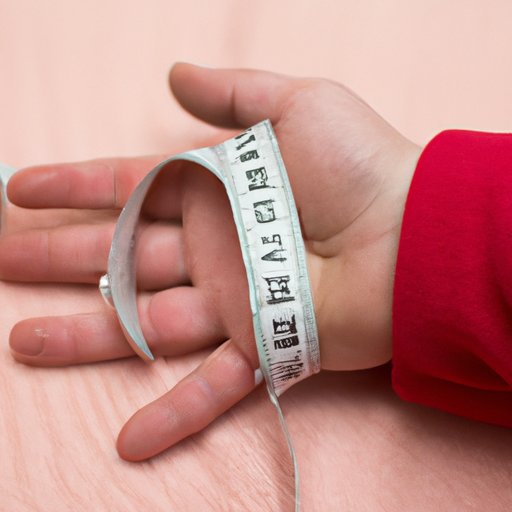
Introduction
Losing weight can be challenging, and many people find themselves frustrated when they step on the scale and don’t see the number they were hoping for. However, the scale only tells part of the story. Measuring various body parts can give you a more accurate and complete picture of your progress. In this article, we will explore what body parts you should measure for weight loss and how to do it effectively.
6 Body Measurements You Should Take for Effective Weight Loss
There are six body parts that are important to measure when you’re trying to lose weight: your waist, hips, thighs, chest, arms, and neck. Measuring each of these areas gives you a more complete picture of your body composition and can help you track your progress over time.
Your waist measurement is an important indicator of overall health. A large waist circumference is associated with an increased risk of heart disease and other health issues. Measuring your hips can also be helpful because it gives you an idea of the distribution of body fat. Thighs are another area where many people carry excess fat, so measuring them can indicate progress even when the scale doesn’t move. Measuring your chest, arms, and neck can help you track changes in muscle mass as well as fat loss.
Why Stepping on the Scale Isn’t Enough: The Importance of Measuring Body Parts for Weight Loss
The scale is an important tool for tracking your weight loss progress, but it doesn’t tell the whole story. When you lose weight, you’re losing both fat and muscle, and the scale can’t differentiate between the two. Measuring your body parts helps you track changes in body composition and gives you a more accurate picture of your progress.
Measuring body parts can also be helpful when you hit a weight loss plateau. Sometimes, your weight may stay the same even though you’re losing fat and gaining muscle. Measuring your body parts can help you see progress even when the scale doesn’t budge.
How to Accurately Track Your Progress: A Guide to Measuring Body Parts for Weight Loss
When measuring body parts, it’s important to be consistent in your technique. Here are some tips to help you measure accurately:
- Use a flexible tape measure
- Measure at the same time of day
- Measure each body part twice and take the average
- Measure in the same location each time
- Measure with the same amount of clothing or lack thereof
Here’s how to measure each body part:
- Waist: Measure at the narrowest part of your abdomen, typically right above your belly button.
- Hips: Measure at the widest part of your hip bones.
- Thighs: Measure the widest part of your thigh.
- Chest: Measure at the widest part of your chest, typically across the nipples.
- Arms: Measure the midpoint between your shoulder and elbow, then measure the circumference of your arm at that point.
- Neck: Measure at the point where your neck meets your shoulders.
Beyond the Scale: A Comprehensive Guide to Measuring Body Fat for Weight Loss
Body fat percentage is another important measurement to consider when tracking your weight loss progress. This measurement tells you how much of your body weight is fat versus muscle. Fat also takes up more space than muscle, so even if you’re losing fat and gaining muscle, your weight may not change much. Measuring body fat can help you track changes in body composition more accurately.
There are several methods for measuring body fat, including calipers and bioelectrical impedance. Calipers use a pinch test to measure the thickness of skinfold at various points on the body. Bioelectrical impedance uses a small electric current to measure body fat percentage.
Measuring the Right Body Parts for Optimal Weight Loss: A Scientific Approach
When measuring body parts for weight loss, it’s important to tailor your approach to your individual body type. For example, someone with an “apple” body shape may carry more weight around their waist, while someone with a “pear” shape may carry more weight in their hips and thighs. A scientific approach takes into account these individual differences and ensures that you’re measuring the right body parts for optimal weight loss.
Unlocking the Secret to Successful Weight Loss: Measuring More Than Just Your Weight
Measuring your body parts is essential for successful weight loss, and this article has outlined the six body parts you should measure for effective tracking. By tracking changes in your body composition along with your weight, you’ll be able to see progress even when the scale doesn’t budge. Use the tips outlined in this article to measure accurately and consistently, and you’ll be well on your way to achieving your weight loss goals.
Conclusion
Measuring your body parts is a crucial part of any weight loss journey. By tracking changes in body composition, you’ll be able to see progress even when the scale doesn’t move much. Remember to measure consistently and accurately and tailor your approach to your individual body type. Start measuring your body parts today, and unlock the secret to successful weight loss.




